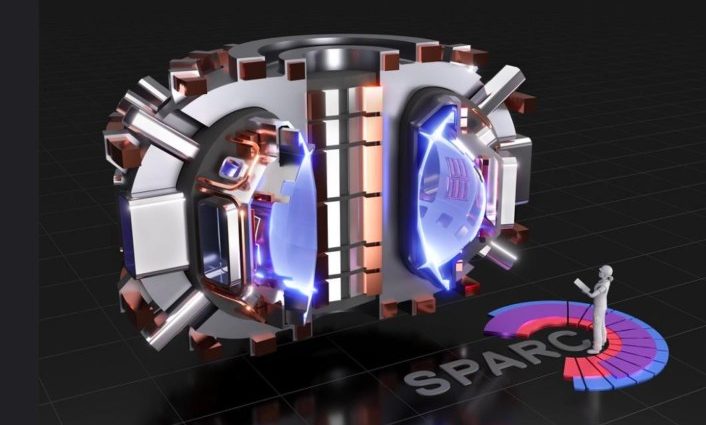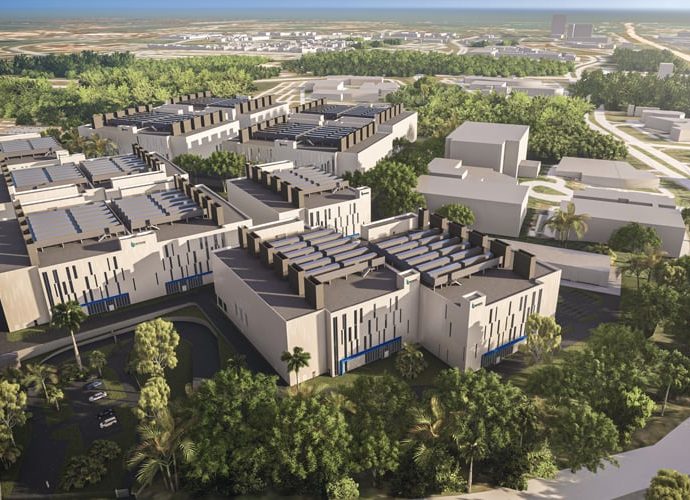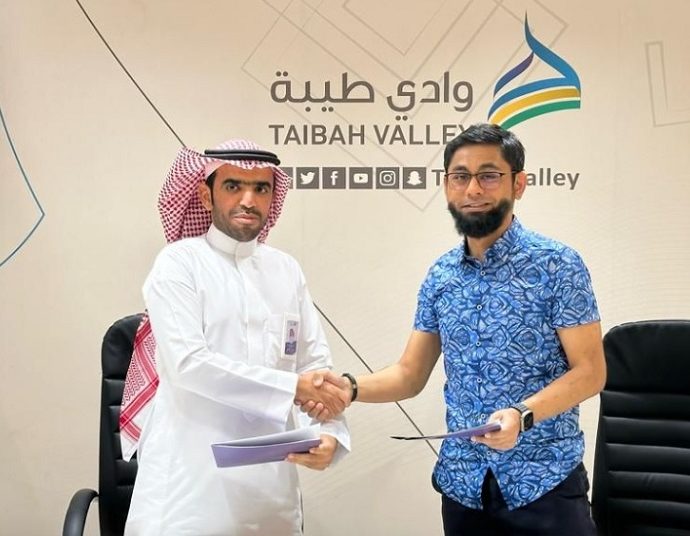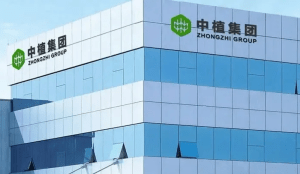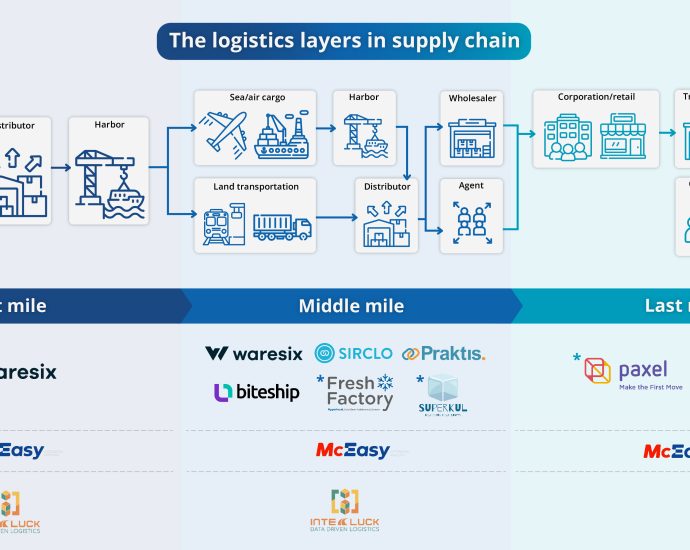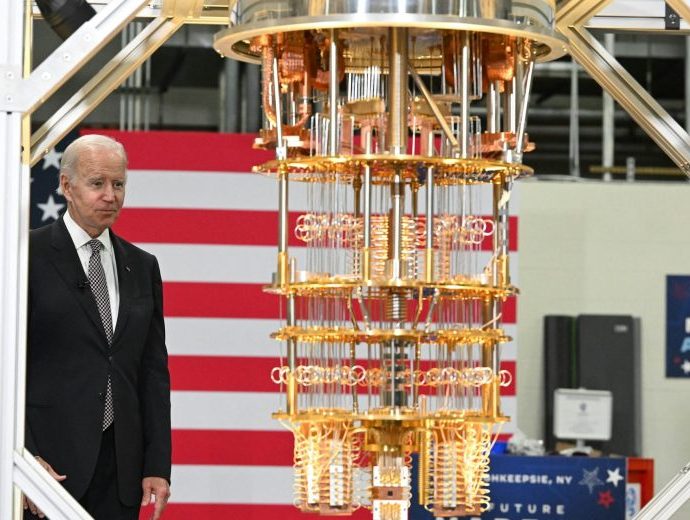Kerry’s COP28 fusion address will change the world
On November 20, US Special Presidential Envoy for Climate John Kerry announced that he would present a new global strategy for fusion energy at the now-ongoing COP28 conference in Dubai.
In a high-profile visit to the headquarters of Commonwealth Fusion, one of the world’s leading private fusion companies, Kerry declared:
“Fusion energy is no longer just a science experiment. Benefitting from decades of investment from the [US] Department of Energy’s world-leading Fusion Energy Sciences programs, it is now also an emerging climate solution. I will have much more to say on the United States’ vision for international partnerships for an inclusive fusion energy future at COP28, during an event on December 5.”
Kerry also spoke of “The first ever modern strategy — fusion strategy — for the United States.”
Whatever the details of Kerry’s address, we have good reason to expect that it will be substantive and not simply a political gesture. It could literally change the world.
Kerry will be the first top-level US government figure to thrust fusion into the center of the global stage in this way. As former secretary of state under the Obama administration, Kerry is quite aware that his fusion initiative is de facto a foreign policy move. To us, it constitutes one of the few unambiguously positive such moves in a long time.
In narrow terms, Kerry’s forthcoming speech will signal the aim of the US to restore its leadership position in international fusion research – a position which has eroded progressively since the late 1980s.
At the same time, it will reflect the fact that realizing fusion as an economically viable energy source will require enormous resources, more effective cooperation between states and a new form of public-private partnership involving diverse technological approaches.
We expect Kerry’s proposal will extend the new “philosophy” of fusion research and development which has emerged in the US as well as the UK in the last decade, to the entire global fusion effort.
The implications go even beyond that. Whether he intends it directly or not, Kerry’s forthcoming announcement promises to redefine the entire issue of reducing human CO2 emissions, which is the central focus of COP28. In a sense, it amounts to turning the global warming campaign upside down.
In our view, fusion is far more than an unlimited energy source; it embodies the upward vector of human civilization, which has increasingly been lost over the last 50 years.
The specter of a global warming “doomsday” has fed dangerously into the environmentalist ideology, which sees human beings first and foremost as destroyers of the planet. Although many environmental problems have to be solved, human civilization cannot survive without upper and outward development. That is what fusion is all about.
Without nuclear energy – fission today, fusion tomorrow – the global anti-CO2 campaign translates into brutal economic austerity, especially for developing nations.
In the meantime, amid deep economic crises in many of these nations, we witness the farcical spectacle of the COP28 conference, with 80 000 representatives traveling from all over the world on a thousand CO2-spouting planes to one of the world’s largest oil producers in order discuss how to reduce CO2 emissions!
If Kerry succeeds in making the realization of fusion power a top global priority as an answer to the “climate crisis”, that alone could make this latest United Nations extravaganza worthwhile.
Background of Kerry’s initiative
What is the background of Kerry’s forthcoming move? Where is this coming from? I and my co-author have a pretty good idea about that.
I have followed developments in fusion since 1977, promoted fusion research through countless articles, presentations and at one point even played a role in off-the-record “fusion diplomacy” between the US and the USSR.
My co-author is an active participant in the growing private fusion “ecosystem” in the US and has worked with Scott Hsu, now senior advisor to the US Under Secretary of Energy for Science and Innovation and Lead Fusion Coordinator for the Department of Energy.
Hsu is a central figure in the ongoing transformation of US fusion strategy and no doubt one of the main sources of the concepts Kerry will present in his forthcoming speech.

As readers of my Asia Times articles know, efforts to realize fusion as an energy source are moving forward at an accelerating pace, propelled by technological breakthroughs, powerful national commitments of nations such as the UK, Japan and China and not least of all by the skyrocketing growth of private investment into fusion companies.
Although the US has been the leading breeding ground for private fusion companies, there has been no decisive national commitment to fusion.
The US used to be the main fusion “superpower”, with the largest and most comprehensive fusion effort in the world. Not surprisingly, US fusion capability was centered on national labs with close military connections.
But starting in the 1980s the US fusion sector suffered from massive budget cuts, from which it has still not fully recovered. I experienced this firsthand. Participation in the International Thermonuclear Experimental Reactor (ITER) project served as a pretext for failure to pursue a serious national fusion effort.
Kerry has long been a strong supporter of fusion, going back at least to his term as senator of Massachusetts. In 2012-2013, for example, then-Senator Kerry mounted a major effort to prevent the shutdown of the Alcator-C-Mod reactor at MIT – one of the most promising innovative fusion projects in the US.
I remember meeting the mastermind of the Alcator program, the brilliant Italian physicist Bruno Coppi. Although Kerry’s effort succeeded in prolonging the life of the Alcator-C-Mod, the reactor was prematurely shut down in 2016.
Just two years later, however, the results and know-how of the Alcator provided the basis for the start-up company Commonwealth Fusion Systems, now one of the largest and most successful private fusion companies aiming to commercialize fusion.
It is no accident that Kerry chose his November 30 visit to Commonwealth Systems as the occasion to announce his forthcoming fusion initiative at COP28.
The process of “spinning off” a 100% government-funded research program into a private fusion company – with continued government support – has no doubt played an important role in forming Kerry’s vision for the future of fusion.
From fusion monopolies to ecosystems
There is more to this tale, however. The last two decades have witnessed a momentous transformation in the philosophy and organization of fusion-related research and development in the United States.
In former times, fusion research was practically a monopoly of giant US national laboratories, specifically the Lawrence Livermore National Laboratories, Los Alamos National Laboratory, Oak Ridge National Laboratory, Sandia National Laboratory and the Naval Research Laboratory. Not by accident, all of these have a strong military background.
The US national labs’ contribution to the worldwide fusion effort cannot be overestimated. Without that and the work of a few analogous institutions in other countries, fusion would be nowhere today.
At the same time, problems inherent to such giant entities such as the tendency to fixate on a few large projects at the expense of smaller ones and conflicts of interests in the struggle for government funding have had a crippling effect. That applies especially to the post-1986 period when fusion research in the US was chronically underfunded.
Meanwhile, throughout the 2010s, the face of fusion research in the US has been radically transformed from insular research activities pursued by decades-old entrenched lab groups toward the cultivation of a topically and organizationally diverse research “ecosystem.”
The change reflects a new philosophy of fusion research, one that acknowledges that, in the absence of a single frontrunner among reactor concepts, a diversity of physical and technological approaches as well as a diversity of organizational forms is prudent.
National labs, universities and startups should not be seen as living in their own separate spheres, but can and should be brought together in complementary ways.
The key driver of this transformation has been the innovation agency of the US Department of Energy, ARPA-E, created in 2009. While ARPA-E’s budget for fusion is extremely limited, the agency’s influence goes far beyond just injecting funds into projects.
In fact, ARPA-E has played a critical role in coordinating across different fusion actors, providing a stage to present ideas and have them subjected to scrutiny and peer validation.
My co-author has participated in such discussions and witnessed how the role of ARPA-E has had a signaling effect and often led to investor commitments that far exceeded ARPA-E’s public funding amounts.
The creation and rise of ARPA-E coincided with another key development: the rise of the fusion startup and the growth of a private fusion industry – a process fueled by massive investor interest.
During the 2010s, the saturation of internet markets along with growing public concerns about climate change turned investor attention to new markets and fusion in many ways fit the bill.
A flagship among fusion startups is Commonwealth Fusion Systems (CFS), the Massachusetts-based startup that was spun out of MIT’s Plasma Science and Fusion Center in 2017.
CFS’s December 2021 announcement that it had raised US$1.8 billion in capital from private investors served as a signal for a wave of investment into new-founded fusion companies.

The Fusion Industry Association (FIA) was founded in 2018 as a lobby for the burgeoning private fusion sector. (Readers can learn more from the interview I conducted in December 2021 with the FIA’s CEO Andrew Holland.)
The latest 2023 survey of the Fusion Industry Association reported that private fusion companies had raised a total of $5.9 billion in private funds.

The contrast between fusion startups and traditional fusion players has created a clearly defined task for ARPA-E. Some degree of “sensemaking” was required to reconcile the two separate universes of fusion approaches and claims.
The emergence of the private fusion industry in parallel to the old incumbents created paradoxical situations. While there were groups that claimed net energy production could not be achieved until at least the 2040s, several private companies claimed to have already achieved it.
Companies like Helion, for instance, signed a power purchase agreement this year with Microsoft, claiming it would deliver fusion energy as early as 2025.
All of this screamed for some sort of independent referee who maintains an overview of the full range of activities in the fusion space and who keeps actors honest through rigorous and independent assessment of their claims. Such a process can then also help inform the distribution of resources with the goal of yielding the greatest societal returns.
That kind of referee emerged with the person of Dr Scott Hsu, who is today a high-level government employee with the Department of Energy but who is also a highly decorated physicist with a research history at Los Alamos National Laboratories.
Hsu has transitioned out of his research job to become a program director at ARPA-E, which served as a stepping stone to his current role in the DOE executive suite.
Hsu is known and respected across the US fusion community. He’s widely seen as an embodiment of ARPA-E’s core principles: deep technical as well as managerial and strategic acumen; understanding of policy and economic issues; curiosity and openness towards new approaches alongside rigor in their assessment and evaluation.
The significance of Hsu’s transition from affiliate of a research lab to a government position cannot be overemphasized. While many countries occupy their expert commissions with acting scientists laden with conflict of interests, the US provides a track for high-level government employees who can put deep technical expertise to bear in the interest of the general public.
In Hsu’s role today as lead fusion coordinator he acts as a central node connecting political decision-makers to those who devise and conduct fusion research at the lab level.
Educating and pulling along political decision-makers has become more and more critical. This relates to the size of the annual funding pool for fusion research as well as regulatory concerns.
A key worry was that a future fusion industry may face a similar fate as the fission industry, which has been burdened by inflated regulatory requirements.
To the great relief of many in the industry, the Nuclear Regulatory Commission decided in April this year to regulate future fusion reactors not like fission reactors but like particle accelerator facilities, greatly simplifying regulatory requirements,
To summarize, much momentum has been building in the US fusion space in recent years Many drivers have come together fortuitously – from investor interest to the creation of ARPA-E and the commitment to create a coordinated ecosystem. The resulting dynamics have turned basic research efforts into a mission-driven ecosystem.
The extension of this process on the international scale that we are seeing now represents a logical next step. Other countries have taken notice and are likewise aiming to support and align their fusion-related actors.
While the intention is clear, often such countries are overwhelmed on how to engage with difficult technical and strategic questions. A global strategy may provide guidance to them to coordinate and exchange information on an international level and to create an even vaster and more diverse ecosystem that identifies and exploits synergies and complementarities among different actors.
Kerry’s fusion initiative: a selective chronology
Whoever wants to fully appreciate the force behind Kerry’s fusion initiative should take a glance at some of the highlights of the process that went into it. The following chronology contains only some highlights but should be enough to get a sense of how the process builds up more and more.
2005: In a report for Congress, entitled “Rising Above the Gathering Storm: Energizing and Employing America for a Brighter Economic Future” the US National Academies called for decisive action, warning policymakers that US advantages in science and technology – which made the country a world leader for decades – had already begun to erode. The report recommended that Congress establish the Advanced Research Projects Agency (ARPA) within the US Department of Energy (DOE) modeled after the successful Defense Advanced Research Projects Agency (DARPA), the agency credited with key innovations such as GPS, the stealth fighter and computer networking.
2007: Congress passes “The America COMPETES Act” which officially authorized ARPA-E’s creation. In 2009, ARPA-E received its first appropriation of $400 million, which funded ARPA-E’s first projects.
2010s: the US switched to an ecosystem approach. Commercial nuclear fusion start-ups that first appeared in the 2000s – Commonwealth Fusion, TAE Technologies, General Fusion, Tokamak Energy and others attracted more and more private investment and development of major capabilities in fusion technology.
March 19, 2012: US Senator John Kerry visits MIT’s Plasma Science and Fusion Center (PSFC) to tour the Alcator C-Mod tokamak and see first-hand how the experiment operated. The C-Mod fusion project was at risk of being terminated due to proposed cuts in the domestic fusion program in the fiscal year 2013 presidential budget. Kerry was already working to restore the project’s funding, writing a letter to the Senate Appropriations Committee strongly arguing against cuts to domestic fusion research.
2014: The American Security Project, a bipartisan think tank founded by John Kerry and Chuck Hagel in 2006, publishes a White Paper entitled “Fusion Power – a 10-year Plan to Energy Security”, declaring: “It is a national security imperative that America makes a dedicated commitment to fusion energy”, and calling for an investment of $30 billion over 10 years, “with the goal of producing demonstration levels of electric power within a decade.”
2018: Commonwealth Fusion Systems is founded as a spin-off from the MIT Plasma Science and Fusion Center with initial funding of $50 million in 2018 from the Italian multinational Eni. Not surprisingly, the CEO of Eni joined Kerry on his latest visit to CFS.
2018: Founding of the Fusion Industry Association (FIA) as a Washington-based lobby for private fusion companies.
2020: Creation of the Milestone-Based Development Program for Fusion of the US Department of Energy via the 2020 Energy Bill and the CHIPS and Science Act.
2021: US Representative Don Beyer founds the bipartisan Congressional Fusion Caucus, which has since grown to 50 members.
March 30, 2021: The first annual policy conference of the Fusion Industry Association in Washington, DC is held.
October 1, 2021: Publication of the UK government’s official Fusion strategy, a comprehensive program with emphasis on building up a domestic fusion industry capable of building fusion power plants.
March 17, 2022: White House summit meeting devoted to “Developing a Bold Decadal Vision for Commercial Fusion Energy.” The US Department of Energy launches an agency-wide initiative to accelerate the viability of commercial fusion energy in coordination with the private sector. Hsu, head of the fusion program at ARPA-E, is named new DOE Lead Fusion Energy Coordinator, joining the Office of the Under Secretary for Science and Innovation.
September 22, 2022: the US Department of Energy (DOE) launches the Milestone-Based Fusion Development Program to support the development and commercialization of a fusion pilot plant
March 9, 2023: President Joe Biden’s proposed Budget for the Fiscal Year 2024 contains a historic $1 billion request for increased government funding for fusion.
April 14, 2023: The Nuclear Regulatory Commission voted to regulate fusion under a different framework than fission, making it possible for fusion to avoid the licensing morass that has long plagued conventional nuclear reactors.
April 14, 2023: Japan’s Cabinet announces a full-scale national Fusion Energy Innovation Strategy.
August 18, 2023: Bipartisan consensus in the US Congress on the Nuclear Regulatory Commission’s decision to regulate fusion under the byproduct materials framework and amend the Atomic Energy Act of 1954 to include fusion.
November 8, 2023: US-UK Joint Statement between the UK Department for Energy Security and Net and the US Department of Energy, announces a strategic partnership to accelerate fusion energy demonstration and commercialization.
(I was not surprised to see this agreement. During my visit to UK fusion facilities in August 2023, I was struck by the particularly close connections between the national fusion laboratories of the two nations, which no doubt reflects the long-standing special relationship between the two countries in defense-related areas.)
November 20, 2023: US Special Presidential Envoy for Climate Kerry visited Commonwealth Fusion Systems (CFS) headquarters in Devens, Massachusetts, near Boston, along with CFS CEO Bob Mumgaard and Eni CEO Claudio Descalzi.


